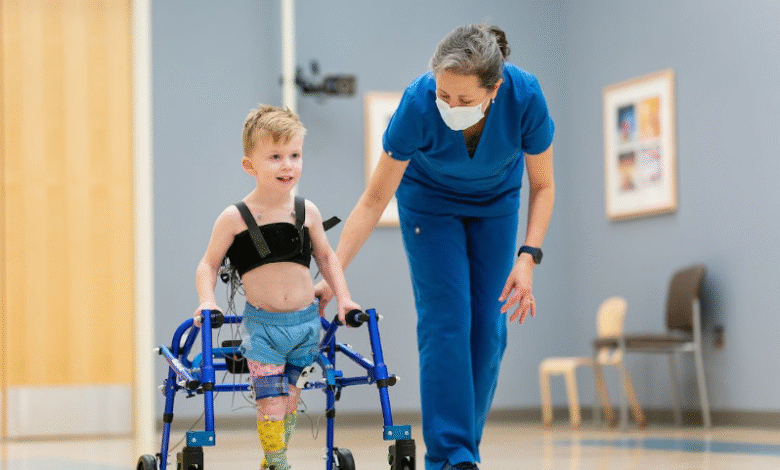What Causes Cerebral Palsy and Can It Be Prevented?

Cerebral palsy is a neurological disorder that affects movement, muscle tone, and posture. It is caused by abnormal brain development or damage to the developing brain, most often occurring before birth, during delivery, or shortly after birth. Understanding what causes cerebral palsy and whether it can be prevented is essential for parents, caregivers, and healthcare professionals alike.
Although cerebral palsy is not always preventable, knowing the risk factors and causes can help reduce the chances of it occurring in some cases. This article will explore the main causes of cerebral palsy and offer insight into prevention strategies that may lower the risk.
Causes of Cerebral Palsy
Cerebral palsy can result from various factors that disrupt normal brain development or cause brain injury. These factors are typically classified based on the time of occurrence: prenatal (before birth), perinatal (during birth), and postnatal (after birth).
See also: Bending in Sheet Metal: Techniques, Applications, and Challenges
1. Prenatal Causes
The majority of cerebral palsy cases occur due to issues before the baby is born. Some common prenatal causes include:
- Infections During Pregnancy: Infections such as cytomegalovirus, rubella, toxoplasmosis, and Zika virus can cause inflammation in the developing brain of the fetus.
- Lack of Oxygen: Poor oxygen supply to the fetus (also known as hypoxia) due to placental problems or other complications can result in brain damage.
- Genetic Mutations: In some cases, genetic abnormalities may affect brain development, leading to cerebral palsy.
- Exposure to Toxins: Maternal exposure to harmful substances, including drugs, alcohol, or environmental toxins, can interfere with brain development.
- Multiple Births: Twins, triplets, or higher-order multiples have a greater risk, especially if one sibling dies in the womb, which may affect the blood and oxygen flow to the surviving fetus.
2. Perinatal Causes
These causes occur during the labor and delivery process. Though they are less common, they still contribute to cerebral palsy cases.
- Birth Asphyxia: A lack of oxygen during delivery can lead to brain damage.
- Premature Birth: Babies born before 37 weeks are at higher risk, as their brains are not fully developed and are more vulnerable to injury.
- Complicated Delivery: Difficult labor involving breech position, prolonged labor, or the use of instruments such as forceps can increase the risk.
3. Postnatal Causes
Cerebral palsy may also result from factors that occur shortly after birth, typically within the first year of life.
- Infections: Severe infections like meningitis or encephalitis can damage the brain.
- Head Injuries: Traumatic brain injuries due to accidents or abuse can lead to cerebral palsy.
- Stroke: Babies can suffer strokes that interrupt blood flow to the brain, resulting in permanent damage.
- Severe Jaundice: If not treated properly, jaundice can lead to a condition called kernicterus, which can damage the brain and cause cerebral palsy.
Can Cerebral Palsy Be Prevented?
Cerebral palsy cannot always be prevented, but some cases can be avoided by managing risk factors and improving prenatal and neonatal care. Here are several strategies to help reduce the risk:
1. Proper Prenatal Care
Regular check-ups during pregnancy can help detect and treat potential problems early. Managing chronic conditions like diabetes and high blood pressure, as well as avoiding infections, is crucial to a healthy pregnancy.
2. Vaccination
Vaccinating the mother against diseases like rubella before pregnancy can prevent infections that may harm the fetus.
3. Avoiding Harmful Substances
Pregnant women should avoid smoking, alcohol, and recreational drugs, all of which can negatively impact fetal development and increase the risk of cerebral palsy.
4. Preventing Premature Birth
Doctors may recommend lifestyle changes or medications to reduce the risk of preterm labor. Ensuring a full-term pregnancy helps the baby’s brain develop more fully and lowers the risk of injury.
5. Safe Delivery Practices
Using skilled healthcare professionals during delivery helps reduce the risk of complications that could result in brain injury. Monitoring fetal distress and responding promptly to problems can prevent oxygen deprivation during birth.
6. Preventing Infant Injuries
Ensuring that infants are protected from falls, car accidents, and abuse can prevent head injuries that may lead to cerebral palsy. Safe sleeping practices and supervised playtime also reduce the risk.
Conclusion
Cerebral palsy is a complex condition caused by a variety of factors that can damage or interfere with brain development. While many cases result from unavoidable circumstances, understanding the potential causes of cerebral palsy can help parents and healthcare providers take steps to reduce risks. Early and consistent prenatal care, proper delivery management, and safeguarding infants during the critical early months of life are key strategies for prevention. Although not all cases of cerebral palsy can be prevented, knowledge and awareness remain powerful tools in reducing its occurrence and supporting healthy development.





